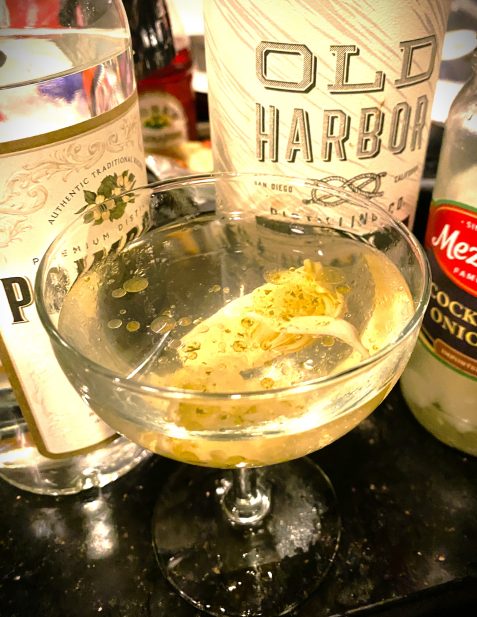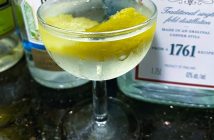 Today, we look within the heart of an artichoke and salute Broadway diva Margo Channing and the titanic performer who gave her life. When All About Eve was being cast, Bette Davis was a substitute for Claudette Colbert, a very different actor who had been sidelined by an injury.
Today, we look within the heart of an artichoke and salute Broadway diva Margo Channing and the titanic performer who gave her life. When All About Eve was being cast, Bette Davis was a substitute for Claudette Colbert, a very different actor who had been sidelined by an injury.
The part was rewritten to some extent to make the character a closer fit and now it’s tempting to say it’s hard to tell where Margo ends and Bette Davis began. But Davis was acting even if she could draw on her own experiences and feelings. It’s true she married actor Gary Merrill, who played Margo’s sincere but long-suffering boyfriend but she also reportedly became good friends with co-star Anne Baxter who played the title role of Eve Harrington…not really a friend.
If you haven’t yet seen All About Eve, please do. It’s very justly considered a Hollywood masterpiece but it’s also just an extra-classy, extremely witty soap and a grand entertainment. Writer-director Joseph Mankiewicz – younger brother of “Mank” and great uncle of that TCM guy – was a classical conservative in every sense of the world. The movie is nowhere near as hoidy-toidy as some of its characters.
An acidic yet sincere salute to old-school divas and the theater, All About Eve begins with presumably hardened show biz professionals disarmed by the veneer of innocence. At the start, inevitably age-obsessed 40-year-old Broadway superstar Margo Channing is convinced that a much younger, seemingly downtrodden, and excessively worshipful superfan named Eve Harrington (Ann Southern) means her well. She is not half as much taken in as everyone important in her life, however, and that will present a problem.
Eve’s biggest booster is Margo’s best friend, Karen (a charming Celeste Holm) but close behind is Margo’s loving but somewhat pompous boyfriend (Gary Merrill). Also on board the USS Eve is Karen’s even more stuffy playwright husband (Hugh Marlowe).
Just two supporting characters are on to Eve from the start: ever-sensible Thelma Ritter as a tart-tongued dresser and scene-stealer deluxe George Sanders as powerful theater critic – such things existed in 1950 – Addison DeWitt. DeWitt, however, has no interest in stopping Eve. Ever the opportunist, the cold-hearted ancestor of Anton Ego wants to harness her incipient star power for his own ends, especially after he’s finished targeting a hapless middle-aged producer via a beautifully bubble-headed starlet, played by none other than a 24-year-old Marilyn Monroe.
Our drink this week is inspired by the lengthy party sequence that closes the first act of All About Eve. Feeling alone and insufficiently loved by everyone close to her, Margo is dead set on throwing a glorious tantrum fueled by jealousy and a never-ending supply of Gibsons – martinis with marinated onions instead of olives or lemon twists. When Margo’s love addresses Karen as a “Gibson girl” – a reference to the apple-cheeked feminine ideal portrayed by illustrator Charles Dana Gibson – that doesn’t seem to help. Seeing a storm on the horizon, Karen asks Margo exactly how big a tantrum they should expect. You’ve probably heard the answer: “Fasten your seatbelts. It’s going to be a bumpy night!”
And now a more dramatic variation on a Dirty Gibson with a hearty new garnish.
The Bumpy Night
2 ounces domestic gin
1 teaspoon dry vermouth
½-1½ teaspoons onion brine
1-2 dashes orange bitters (very optional)
1 marinated artichoke heart (essential garnish)
Combine the liquid ingredients in a mixing glass or cocktail shaker with plenty of ice and stir vigorously as long as you can stand. Strain into a well-chilled cocktail glass. Sip and try not to be too bitchy.
***
Fans of All About Eve will likely understand what’s up with the artichoke garnish in the Bumpy Night. “Remind me to tell you about the time I looked into the heart of an artichoke,” Margo responds to a story about looking through the wrong end of a viewfinder her well-intentioned director BF starts to tell Eve. The literal meaning of the line may be obscure but it’s clearly intended to take both her clueless BF and Eve down a peg. It might have something to do with Margo’s opinion of the construction of Eve’s heart: neither animal nor mineral, but vegetable.
The choice of US-made gin might also be clear to devoted AAE-heads. When asked whether she ordered cheaper and presumably grossly inferior domestic gin by mistake for the coming soiree, Margo replies. “The only thing I ordered by mistake is the guests. They’re domestic, too, and they don’t care what they drink as long as it burns.”
In 1950, the American booze business was still at a low point after the double whammy of Prohibition and World War II; what Margo and her guests would have been drinking that night was likely to be swill by modern standards. Today there are any number of quality gins made in the US, with Aviation and possibly St. George being the best-known brands. I went with what I had on hand, which was undoubtedly better than what you could find in 1960 and undoubtedly worse than you can find at a top-flight big-box or specialty liquor store.
Old Harbor Adventure Series is the San Diego distillery’s most affordable gin at $11.99, so probably not its best. It nevertheless does the job with its Gordon’s-like mixability. “London dry style” Primrose Gin is made in Kentucky and is nothing to write home about unmixed. However, its astringent quality fits in when lubricated by the oil in a marinated artichoke. I was trying to make a drink that would work with a mid-shelf or lower product. Gordon’s is as English as it gets historically, but it would probably be fine.
I also tried something from my home town. L.A.’s Mulholland Gin is an intriguing product with an appropriate historic name and also appropriate for my town, it’s got an actor. (It’s founded by distiller Matt Alper and Walton Goggins of The Hateful Eight, Justified, The Shield, and more.) Mulholland’s heavy mix of lavender and cucumber notes did not play well with the onion brine or the artichoke garnish but don’t hold that against it. I’ll be trying it with other drinks.
There are two other choices to make her – how much onion brine and whether or not to use orange bitters. My advice is to start with the minimum brine. As for orange bitters, using it in a standard martini is an outdated practice I agree with and usually follow. But that’s where it starts to get confusing.
The primary distinction between a Gibson and a martini originally had nothing to do with the garnish, as per Kevin Gray of Liquor.com. The only distinction the earliest recipes made between the two drinks is that the Gibson was sans bitters. Somehow, cocktail onions eventually became the key to the Gibson by the 1930s and 40s. To be true to Margo Channing, her 1950 drinks probably didn’t have any bitters so you can also be a purist while eschewing orange bitters.


